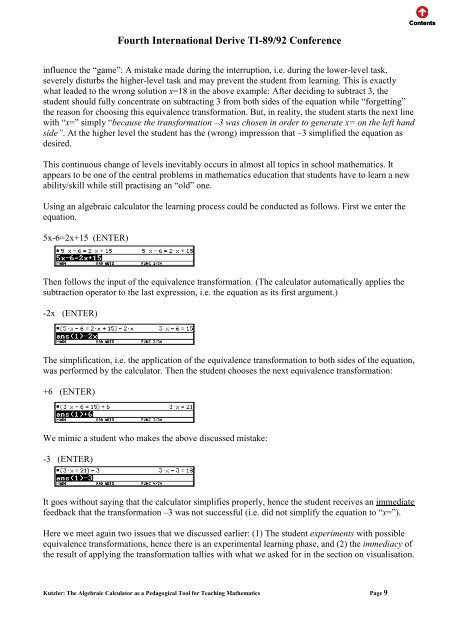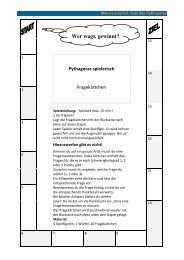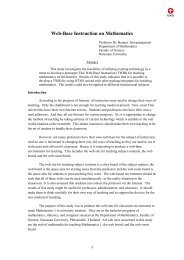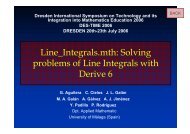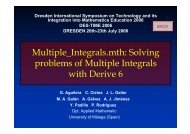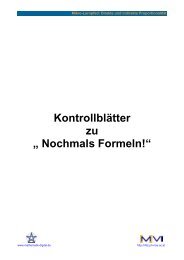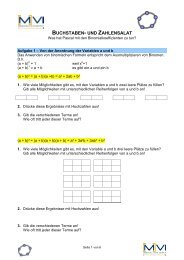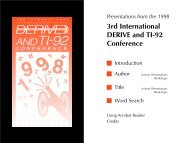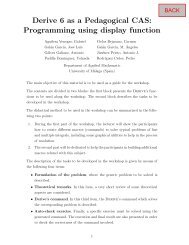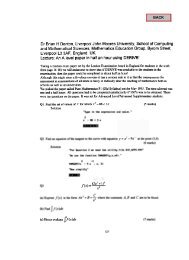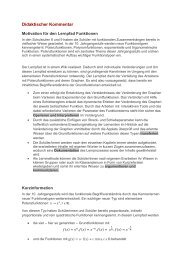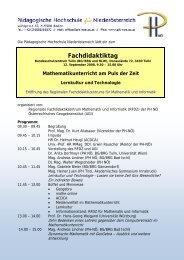The Algebraic Calculator as a Pedagogical Tool for Teaching ...
The Algebraic Calculator as a Pedagogical Tool for Teaching ...
The Algebraic Calculator as a Pedagogical Tool for Teaching ...
Create successful ePaper yourself
Turn your PDF publications into a flip-book with our unique Google optimized e-Paper software.
Fourth International Derive TI-89/92 Conference<br />
influence the “game”: A mistake made during the interruption, i.e. during the lower-level t<strong>as</strong>k,<br />
severely disturbs the higher-level t<strong>as</strong>k and may prevent the student from learning. This is exactly<br />
what leaded to the wrong solution x=18 in the above example: After deciding to subtract 3, the<br />
student should fully concentrate on subtracting 3 from both sides of the equation while “<strong>for</strong>getting”<br />
the re<strong>as</strong>on <strong>for</strong> choosing this equivalence trans<strong>for</strong>mation. But, in reality, the student starts the next line<br />
with “x=” simply “because the trans<strong>for</strong>mation –3 w<strong>as</strong> chosen in order to generate x= on the left hand<br />
side”. At the higher level the student h<strong>as</strong> the (wrong) impression that –3 simplified the equation <strong>as</strong><br />
desired.<br />
This continuous change of levels inevitably occurs in almost all topics in school mathematics. It<br />
appears to be one of the central problems in mathematics education that students have to learn a new<br />
ability/skill while still practising an “old” one.<br />
Using an algebraic calculator the learning process could be conducted <strong>as</strong> follows. First we enter the<br />
equation.<br />
5x-6=2x+15 (ENTER)<br />
<strong>The</strong>n follows the input of the equivalence trans<strong>for</strong>mation. (<strong>The</strong> calculator automatically applies the<br />
subtraction operator to the l<strong>as</strong>t expression, i.e. the equation <strong>as</strong> its first argument.)<br />
-2x (ENTER)<br />
<strong>The</strong> simplification, i.e. the application of the equivalence trans<strong>for</strong>mation to both sides of the equation,<br />
w<strong>as</strong> per<strong>for</strong>med by the calculator. <strong>The</strong>n the student chooses the next equivalence trans<strong>for</strong>mation:<br />
+6 (ENTER)<br />
We mimic a student who makes the above discussed mistake:<br />
-3 (ENTER)<br />
It goes without saying that the calculator simplifies properly, hence the student receives an immediate<br />
feedback that the trans<strong>for</strong>mation –3 w<strong>as</strong> not successful (i.e. did not simplify the equation to “x=”).<br />
Here we meet again two issues that we discussed earlier: (1) <strong>The</strong> student experiments with possible<br />
equivalence trans<strong>for</strong>mations, hence there is an experimental learning ph<strong>as</strong>e, and (2) the immediacy of<br />
the result of applying the trans<strong>for</strong>mation tallies with what we <strong>as</strong>ked <strong>for</strong> in the section on visualisation.<br />
Kutzler: <strong>The</strong> <strong>Algebraic</strong> <strong>Calculator</strong> <strong>as</strong> a <strong>Pedagogical</strong> <strong>Tool</strong> <strong>for</strong> <strong>Teaching</strong> Mathematics Page 9


